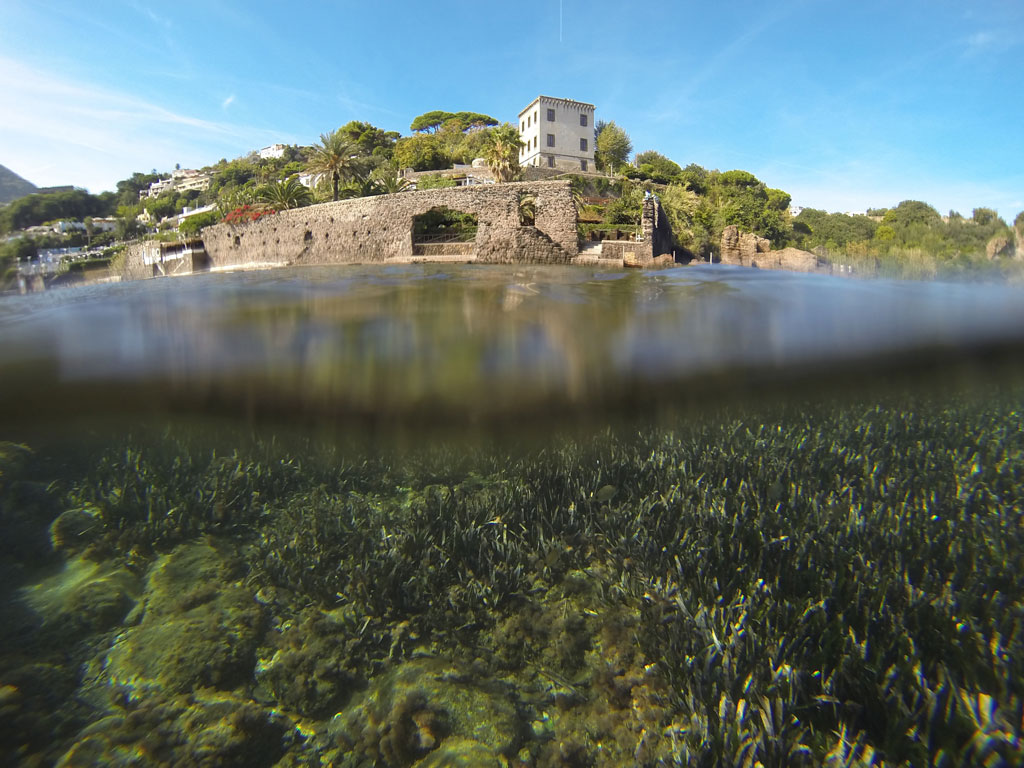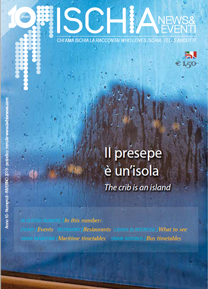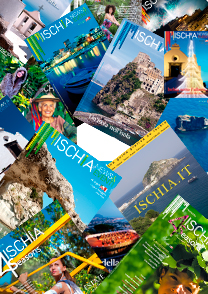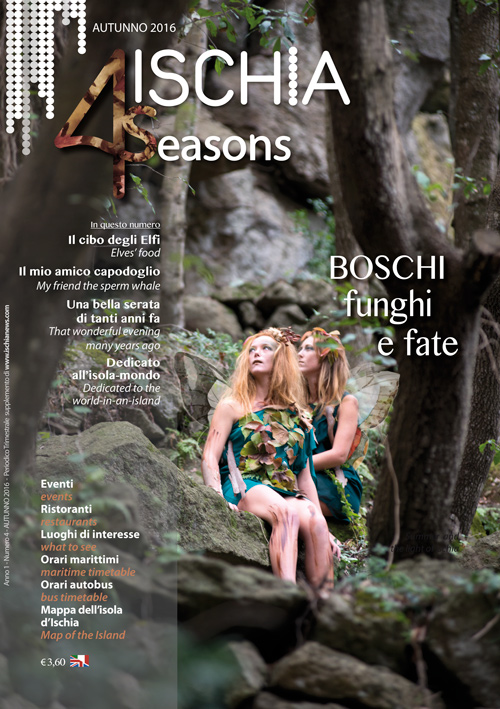Aenaria, the mythical Roman city returned from the sea
 For nineteen centuries, the thick prairie of Posidonia had guarded and protected it. The ancient Aenaria was now only a legend. As the landing of Enea, in that bay crouched between the great island and the Aragonese Castle. Where no one had ever found traces of the mythical Roman city that had transmitted its name to the entire island. Until the summer of 1973, when two friends, during a dive between the Scogli of Sant’Anna, found a strange old “thing”. Galena, experts had ruled. Was a first sign of Aenaria’s existence? The positive response came from the research carried out in August, which brought to light findings capable of witnessing a submerged city, precipitately abandoned by the inhabitants between 130 and 150 AD, before being inexorably swallowed by the sea.
For nineteen centuries, the thick prairie of Posidonia had guarded and protected it. The ancient Aenaria was now only a legend. As the landing of Enea, in that bay crouched between the great island and the Aragonese Castle. Where no one had ever found traces of the mythical Roman city that had transmitted its name to the entire island. Until the summer of 1973, when two friends, during a dive between the Scogli of Sant’Anna, found a strange old “thing”. Galena, experts had ruled. Was a first sign of Aenaria’s existence? The positive response came from the research carried out in August, which brought to light findings capable of witnessing a submerged city, precipitately abandoned by the inhabitants between 130 and 150 AD, before being inexorably swallowed by the sea.
It had been a revealing summer. Below the tall aquatic plants and the layer of sand, about seven meters deep, many terracotta objects of daily use were recovered, attributable to a period between the III century BC and the I AC. Many of them were local, others of the most diverse origins. It must have been a well-connected center, then. Certainly flourishing. Among the many artifacts of metal returned from the sea, one was noted for the unusual dimensions. It was a large lead ingot of over 36 kilos. With an inscription, even a signature: Gneo Atellio. They had found it near an “opus reticulatum” structure, together with some blocks of galena, the precious raw material from which lead and silver were extracted, with other tin and copper ingots and objects typical of the metallurgical industry. It was not a common construction, but what remains of a foundry. Which, unlike others perhaps active in the city, had handed down the name of its owner. Identical to that of another architect of the time, already known to archaeologists because of an important metalworking workshop in Cartago Nova, in Spain. Both belonging to the Atelli “gens”, of Campania origin, who had won the Roman citizenship during the Social War. A family dedicated to metal processing between Ischia and Spain. It is no coincidence that the excellent quality raw material used in the “plumbaria” of Gneo, in Aenaria, came from the Spanish mines.
Aenaria from “aenum”, metal, therefore. The discovery of an intense metallurgical activity finally explained the origin of the name of the rediscovered city. On which, however, after the summer drew silence again, leaving the sea to return master.
It remained there for another forty years, during which only the finds of Aenaria were visible, now exhibited in the Archaeological Museum of Pithecusae, in Lacco Ameno. Now the presence of a city under water was known and was mentioned to tourists who frequented the beautiful bay below the Castle.
To revive the path blocked in ‘73 was a project of research and development of the archaeological site of a group of young islanders, sons of the members of the cooperative that ferries tourists from one point to another in the bay. Thus, after the green light of the Archaeological Superintendence, owner of the scientific management of the company, in 2011 the excavation on Aenaria was resumed. Since then, every year, in spring and autumn, a team of specialized divers, under the supervision of archaeologist Alessandra Benini, proceeds to unveil the invisible city.
Protected from the winds and more secure today, thanks to a natural cliff that bordered the open side of the bay, the coast line was much more ancient in antiquity and where is now the sea stretched the coastal settlement connected to the inhabited areas on the surrounding hills. Therefore, the unmistakable Scogli of Sant’Anna have revealed artefacts that are now partly submerged. Like the nymphaeum carved in a cave inside a rock or the long corridor in the rock that passes through another, probably in communication with a maritime villa.
Also on the coast of Aenaria the “villae maritimae” should not be missing. To reveal it are stone columns, bases, fragments of statues and wall paintings, many white and glass mosaic tiles, construction materials and fine tableware ceramic objects. Always under the sea were found walls and the beginning of the road that climbed on the hills.
The port is dominant in the bay, the hub of trade that Aenaria held in the Mediterranean Sea. In addition to exporting local products, the finds found tell of goods coming from every corner of the Mare Nostrum. The daily traffic on the quay in “opus cementicium”, built between the end of I century B.C. and the beginning of the I century AC., of which about twenty meters have been rediscovered and which continues, under the sand.
It was working on an extension, witnessed by a wooden formwork, well preserved after two thousand years, designed to contain the cementitious mortar for the construction of the new section. Interrupted by the sudden event that depopulated the city.
Waiting to reopen the excavation in May, the guided visits to the Aenaria site start again on the glass-bottomed “Marina di Sant’Anna” boat. Discovering the beauties of the landscape and the historical suggestions of the bay at the foot of the majestic Aragonese Castle. A 50-minute excursion, preceded by the welcoming of visitors with a nice explanatory video in the multimedia room a few steps from the embarkation, in the village of Ischia Ponte. Built in the 1300s where once the heart of Aenaria was.
For info on guided tours and booking (mandatory) call the numbers 081-985510 and 984854.



















